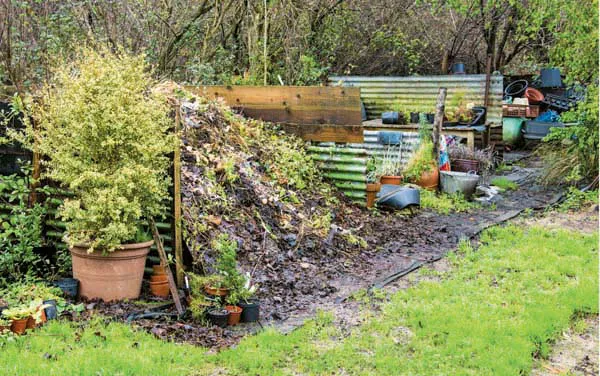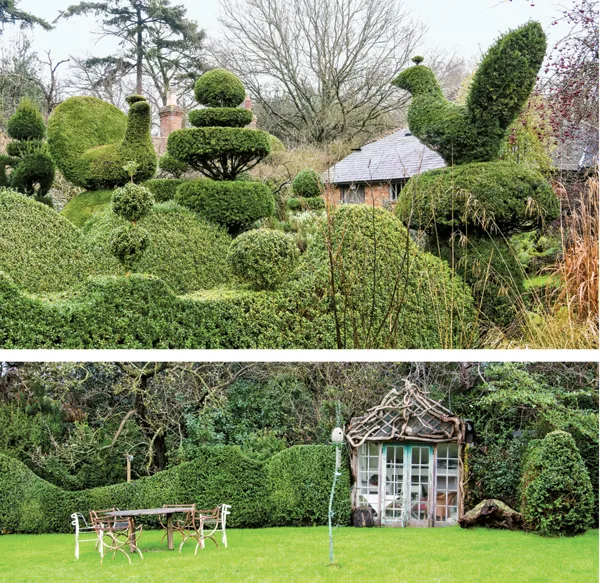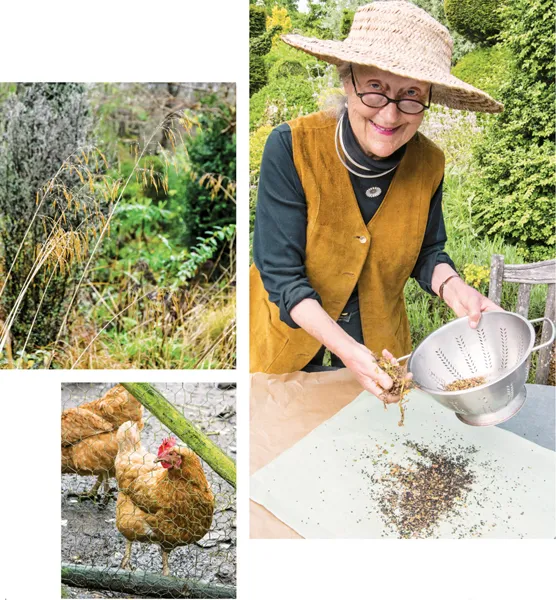
eBook - ePub
My Tiny Home Farm
Simple ideas for small spaces
Francine Raymond, Bill Mason
This is a test
- 160 pages
- English
- ePUB (mobile friendly)
- Available on iOS & Android
eBook - ePub
My Tiny Home Farm
Simple ideas for small spaces
Francine Raymond, Bill Mason
Book details
Book preview
Table of contents
Citations
About This Book
Whether you're looking to farm a balcony, backyard, an allotment or an acre, My Tiny Home Farm is bursting with ingenious ideas and savvy solutions to help you transform any plot or planter into a super smallholding.
Visit a rooftop in Brooklyn, explore a Swedish koloni plot, and enjoy the harvest at an organic vineyard in England. The featured smallholders share their expertise, from growing fruit and veg and raising livestock to advice on establishing creative community spaces.
Practical project ideas for potato buckets, hen baths, bee hotels and more will ensure your plot reaches peak productivity. Get inspired, let your imagination grow and enjoy your tiny home farm.
Frequently asked questions
At the moment all of our mobile-responsive ePub books are available to download via the app. Most of our PDFs are also available to download and we're working on making the final remaining ones downloadable now. Learn more here.
Both plans give you full access to the library and all of Perlego’s features. The only differences are the price and subscription period: With the annual plan you’ll save around 30% compared to 12 months on the monthly plan.
We are an online textbook subscription service, where you can get access to an entire online library for less than the price of a single book per month. With over 1 million books across 1000+ topics, we’ve got you covered! Learn more here.
Look out for the read-aloud symbol on your next book to see if you can listen to it. The read-aloud tool reads text aloud for you, highlighting the text as it is being read. You can pause it, speed it up and slow it down. Learn more here.
Yes, you can access My Tiny Home Farm by Francine Raymond, Bill Mason in PDF and/or ePUB format, as well as other popular books in Biological Sciences & Horticulture. We have over one million books available in our catalogue for you to explore.
Information
MUCK INTO MAGIC
Whatever you grow and wherever you grow it, to get the best from your plot, there are certain basic tenets that apply. Your soil needs to be enriched, seeds must be sown, pollinating insects should be encouraged, and waste needs to be effectively managed.
Of course you can buy soil enhancers, compost and mulches; you can spend a fortune on commercial seeds, buy in pollinating insects and pay to have waste removed; but why not save precious money? Smallholders have been composting, seed-saving, spreading soil improvers and helping wildlife for generations, and the satisfaction of following time-honoured practices is part of the joy of raising produce and growing plants.
All the smallholders we visited have turned muck into magic, sown seeds of success and worked together to fulfil their ultimate goal – to produce food humanely and in an ecologically benign way.

STARTING FROM SCRATCH
At first glance, Charlotte and Donald Molesworth’s garden looks as though it has been in the family for generations, probably the result of sustained work by a whole team of gardeners and certainly the product of several hard-earned fortunes. Of course, the Molesworths have put their hearts and backs into their garden, but it’s their imagination and ingenuity that have given birth to its soul.
Creating a garden like this on a shoestring is an art – but combine Donald’s background in farming, Charlotte’s career as an artist and their shared love of the natural world, and you have exactly the right ingredients for the ideal garden. They found the old kitchen garden site in 1983, complete with a dilapidated bothy, piggery and pottery, and rescued it from dereliction.
Bringing life to their garden on a budget over the past 30 years has been a lesson in thrift. They still go to farm sales and reclamation yards but admit it’s harder to find good pieces nowadays, and suggest keeping an eye open for building and demolition sites to search out useful agricultural and industrial pieces.
Their famous hedges and topiary were all planted from seedlings or cuttings; paths have been paved with reclaimed bricks that are ‘over-fired seconds’; gates were rescued from skips and fences made with home-grown hazel. With an imagination like Charlotte’s, a redundant tennis court soon becomes a fruit cage, plastic barrels are transformed into water butts and a metal pigswill boiler is turned into an eye-catching plant container.
The Molesworths say, ‘Going shopping isn’t our first reaction to fulfilling a need. People pass things on.’ A list of most gardeners’ regular outgoings includes seeds, compost and plants. This couple’s home-composting regime includes layering all their old clothes, paper and cardboard along with kitchen, garden and animal waste (the last from their elderly Jacob, Shetland and Soay sheep or rescued battery poultry). And to them, do-it-yourself propagation is what gardening is all about.

Charlotte and Donald have created a garden packed full of great ideas and money-saving techniques among the fabulous topiary fantasies.

Charlotte Molesworth selects the best plants to save seed from and then collects them when dry, before the autumn weather sets in.

The Molesworths’ beehives are full of worker bees who make sure flowers are pollinated so there’s seed to be stored carefully in lined, damp-proof drawers, safe from predators.
• To propagate your own plants, collect the seed of interesting non-hybrid varieties on a dry sunny day after the dew has dried and pop into labelled envelopes.
• ‘Dry’ seeds such as those of pulses, peppers, onions and most herbs and flowers should be stored in an airy place until their pods or husks are completely dry. Then crumble the pods or husks and winnow the seeds to separate them from the chaff by placing them in a bowl and swirling gently around. The seed will sink to the bottom and the chaff can be carefully removed.
• Cucumber and aubergine seeds need to be collected from the pulp of their fruit. Scoop the seeds and pulp into a bowl and add water. The seeds will sink. Rinse them in a sieve and leave to dry on a shiny plate in an airy place. Store your seed in jars.
• Some seeds, including tomatoes, melons, squash and cucumbers, must be fermented to remove germination-inhibiting coatings. Put the seeds and pulp into a jam jar, cover with water and leave in a warm place until a layer of bubbles forms on the surface. Drain then clean as above.
• Store your seed until planting time, making sure that rodents can’t get at it. Dusting with a little diatomaceous earth will prevent insect infestation. Special seeds can be swapped with friends on garden visits and make great presents.

WASTE TO WONDER
How to recycle waste effectively is one of the smallholder’s biggest quandaries. Turning animal and vegetable by-products into something useful and enriching to condition our soil, without polluting our surroundings or expecting local authorities to shoulder the burden, requires thought and planning.
Serena and Marcus Henderson have the process down to a fine art. They rent small pieces of ancient orchard from local farmers and turn the apples into pure gold – artisan cider. The fruit would otherwise have gone to waste as growers now plant small dwarf trees that are easily managed, but some retain an affection for these magical spots with their standard trees and heritage varieties and leave them to wildlife.
The Hendersons manage these small pockets of horticultural history kindly and make a living selling their cider online and at local fairs, markets and festivals. ‘It started as fun, but now we can’t keep up with demand,’ says Serena. They believe in localism and source heritage varieties which they juice in traditional oak presses, leaving some to mature in old barrels and mulling others.


Unwanted billy goats, hens and turkeys all find a welcoming home on Serena and Marcus’ smallholding.
Most of the pommace, or waste residue, is taken away by a local shepherd to feed his flock over winter. Some is kept and added to their massive compost heap in among the fruit trees, alongside manure and bedding from their motley flock of rescued billy goats, much-loved hens and a fabulous Bourbon Red stag turkey, Barney, who’ll never have to worry about Christmas. They pile on kitchen and garden waste and turn the compost regularly with a digger basket on an old farm tractor, and when it’s ready Serena grows a fabulous crop of pumpkins on this glorious compost mound. She pops seeds into large pots and plants them out when the seedlings are established. They’re robust, pest-free and great fun to grow.
I always plant a few squashes in my own small compost heap and they ramble across the dead hedge behind my garden. The young shoots can be eaten steamed as a side dish, and the pumpkins themselves are used in savoury or sweet dishes, made into jam, or, in the hands of experts, even turned into cider.
Most soils can be improved by adding organic manure; it adds nourishment and substance to sandy soils and lightens clay ones. Animal excrement, added to their shed hair and feathers, plus litter or bedding – especially straw, ribbed paper or card and hemp – is the best source of garde...
Table of contents
- Cover
- Title
- Contents
- Introduction
- Growing all over the world
- Out of the ordinary
- Harvest time
- Garden farming
- Muck into magic
- Resources
- Authors